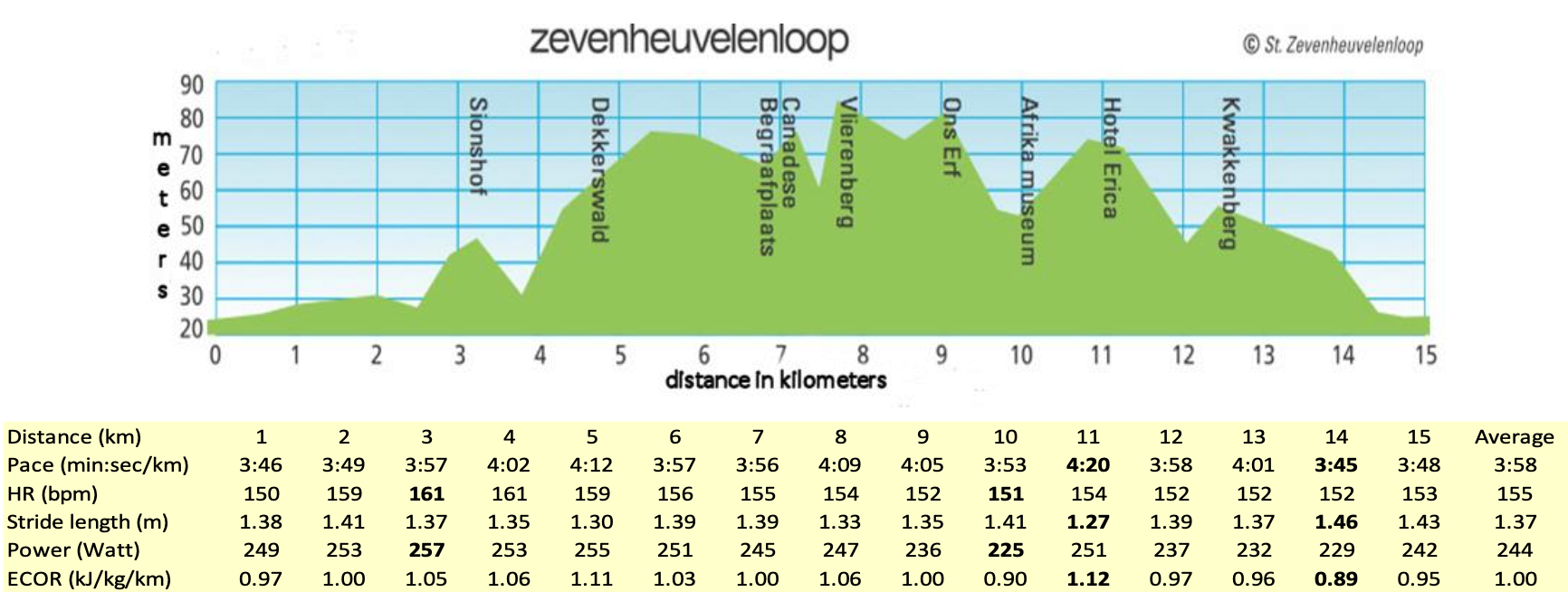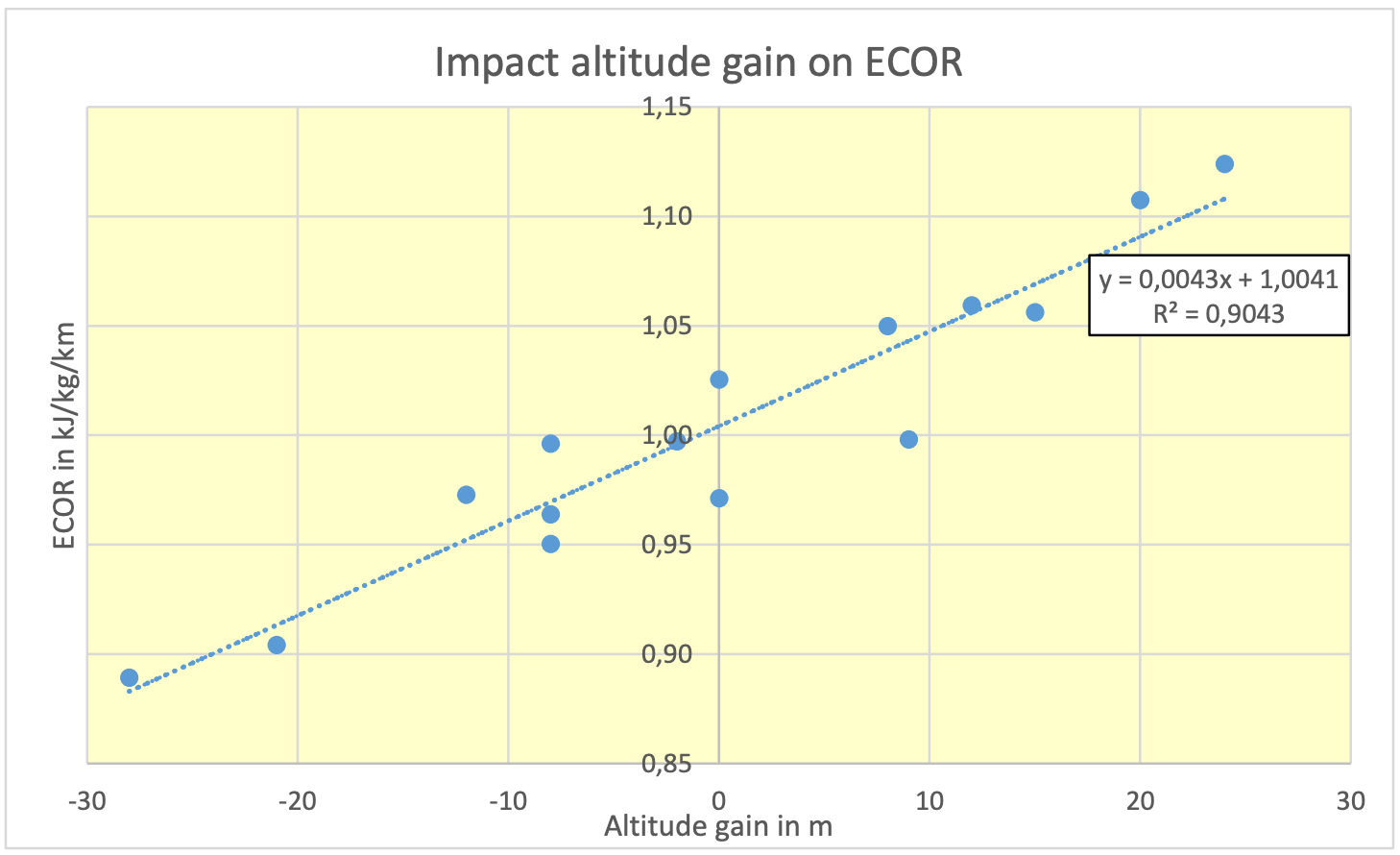A basic analysis of a 15k race | Seven Hills Run

The Seven Hills Run is an annual 15 km road running race held in Nijmegen, the Netherlands (https://en.wikipedia.org/wiki/Zevenheuvelenloop). It has grown into one of the largest road races in the Netherlands with 40,000 participants. In the 2010 edition, Leonard Komon improved the official 15 Km World Record in Nijmegen to 41:13.
Both authors of The Secret of Running (www.thesecretofrunning.com) participated and ran the race wearing a Stryd foot pod. In this paper, we will analyze the Stryd-data of author Hans van Dijk. He completed the race in 59:34, some 17 minutes behind winner Joshua Cheptegei (Uganda, 42:08). In his age class (M60), Hans finished 2nd out of 819 participants.
The results of Hans at the Seven Hills Run
We have made a detailed analysis of the Stryd data in another paper, that can be downloaded from our website www.thesecretofrunning.com. Some general results will be presented below.
The figure and table below clearly illustrate the big impact of the altitude differences on pace, heart rate, stride length, power and the Energy Cost of Running (ECOR, in kJ/kg/km). Uphill, during km 11, pace and stride were low and ECOR was high. Downhill, during km 14, the reverse was the case.

Some main conclusions:
Hans should have maintained a constant power of around 244 Watt. Instead, he used too much power in the initial parts of the race and he struggled somewhat in the last parts. As the race took almost 1 hour, we can conclude that his Functional Threshold Power (FTP) will be equal to his average power of 244 Watt. As Hans weighs 58 kg, his specific FTP will be 244/58 = 4,21 Watt/kg. As discussed in our book, this is equal to a VO2max of 4,21/0,0715 = 59 ml/kg/min. This value matches the result of a recent laboratory test. So, Hans concluded that at the next race, he will try to run at a constant power of 244 Watt. (obviously, for a 1 hour race, as power is dependent on endurance time, see our book).
The power data of Stryd reflects the impact of the hills perfectly. Uphill, the ECOR is higher and downhill it is lower. This relationship is very strong as shown in the figure below. The figure also shows that at a flat track the ECOR is 1.0 kJ/kg/km, which confirms the theory in our book.

If you would like to purchase The Secret of Running (or the German version, Das Geheimnis des Laufens), you can do so at the bottom of store.stryd.com.

